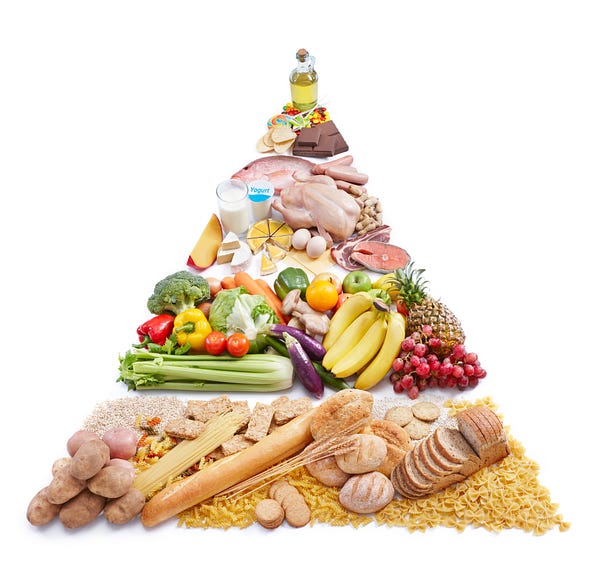The Forty-Year Low-Fat Folly


The Forty-Year Low-Fat Folly
It seemed to make sense: If you don’t want fat on your body, don’t put fat into your body. Fat has 9 calories per gram (about 120 calories in a tablespoon), compared to just 4 calories per gram for carbohydrates or protein. So, in the 1970s, prominent nutrition experts began recommending that everyone follow a low-fat diet, in the belief that eating less fat would automatically help lower calorie intake and prevent obesity.


Thus began the biggest public health experiment in history. Over the next few decades, the U.S. government spent many millions of dollars in a campaign to convince Americans to cut back on fat, culminating in the creation of the original Food Guide Pyramid. Published in 1992, the Pyramid advised us to eat all types of fat sparingly, and instead load up on grain products — up to eleven servings a day! The food industry joined this campaign with a vengeance, realizing that they could replace the fat in their standard products with cheaper refined carbohydrates, label them as health food, and sell them at a premium price. Since then, food aisles have overflowed with packaged products like fat-free cookies, low-fat salad dressings, reduced-fat peanut butter, and countless other variations. At the same time, high-fat natural foods like nuts, olive oil, avocado, and cheese were given a bad reputation. Today, a typical dairy section might have fifty kinds of low-fat and nonfat yogurt (almost all highly sweetened), but try finding the plain, whole-milk variety. Until recently, sugar was even promoted as a good way to displace fat from the diet, and sugary beverages were touted as fat-free.
Unfortunately, this experiment didn’t turn out well. In the 1960s, Americans ate more than 40 percent of calories as fat. Today, fat intake approaches the government-recommended limit of 30 percent, but rates of obesity have skyrocketed. These opposite trends are probably not coincidental.
With enthusiasm for the low-fat diet reaching a crescendo in the 1990s, the government launched the world’s largest clinical diet trial as part of the Women’s Health Initiative (WHI). At a total of cost of $700 million, the WHI randomly assigned about fifty thousand postmenopausal women throughout the United States to a low-fat diet or a control group for eight years. However, the study had a fundamental flaw, with a clear bias in favor of the low-fat diet built into the design. Women in that group received intensive nutritional and lifestyle support — not only to reduce dietary fat, but also to increase vegetables, fruit, grains, and fiber — including eighteen group counseling sessions and an individual session during the first year alone. Thereafter, they had quarterly maintenance sessions and optional monthly peer group meetings. In striking contrast, women in the control group received only written educational materials. Considering the dramatically different amounts of attention paid to the two groups, you’d expect the low-fat group to fare much better than the control group. And yet, the results show anything
The main results of the WHI trial were released in 2006, generating a media firestorm. Women in the low-fat group lost a maximum of only 5 pounds compared to the control group, and this small difference decreased to 1 pound by the end of the study. Furthermore, there was no reduction in rates of cancer, diabetes, or heart disease. From any perspective, this was a resounding failure for the low-fat diet.


Many smaller but better-designed studies, in which all participants received similar intensity of treatment, have since been conducted. This way, the effects of different diets can be compared directly, in a fair and meaningful way. Several systematic reviews of such studies (called meta-analysis) have been published, and the results are sobering. Low-fat diets produced less weight loss than higher-fat diets, including Mediterranean and low carbohydrate — raising the possibility that the most widely recommended method for four decades to reduce calorie intake has done more harm than good.
Exported from Medium on July 6, 2016.






